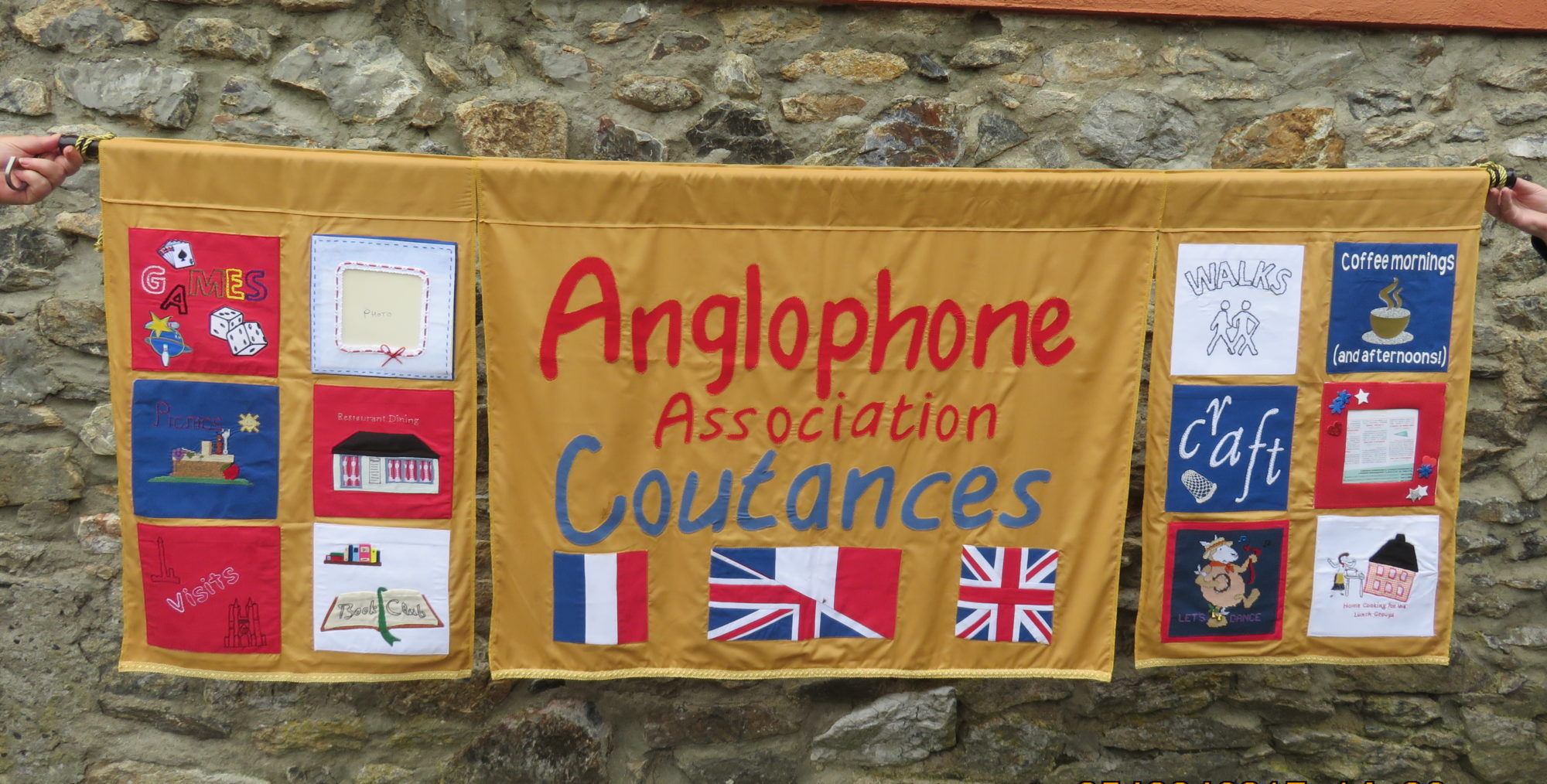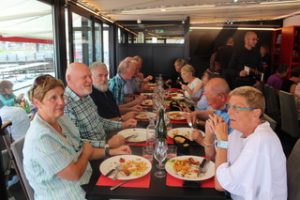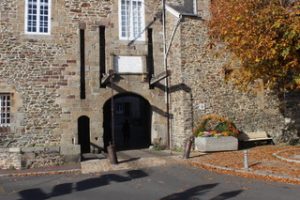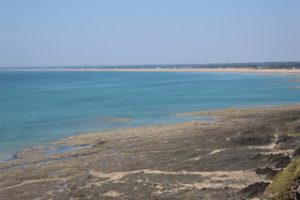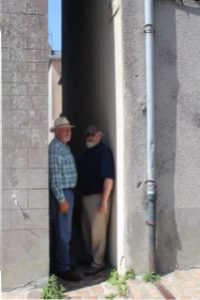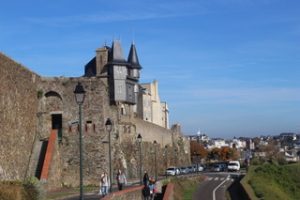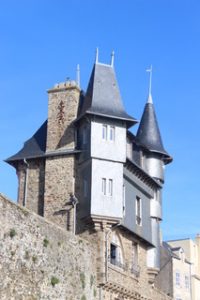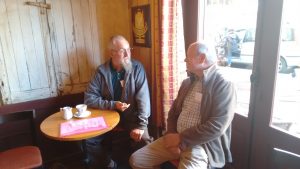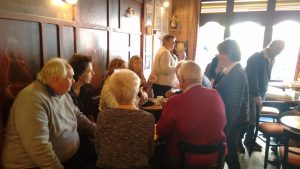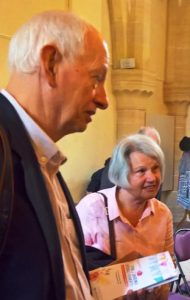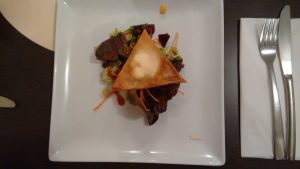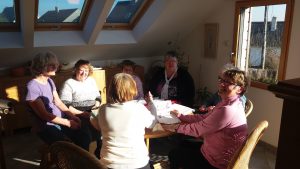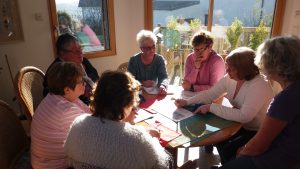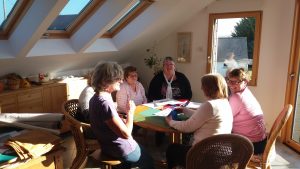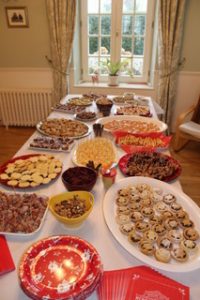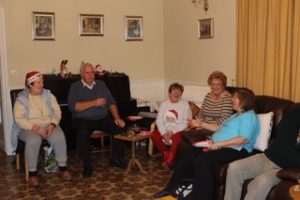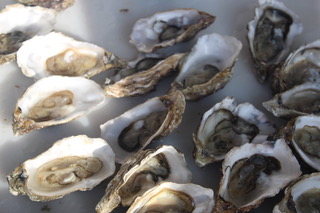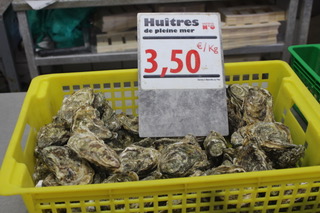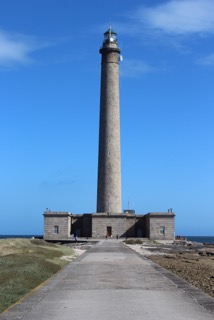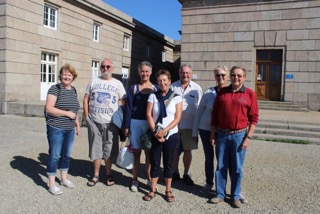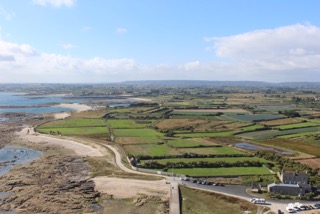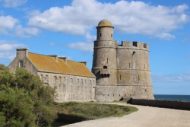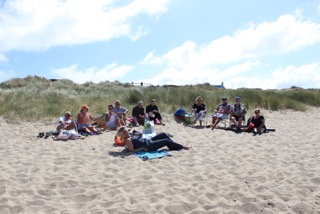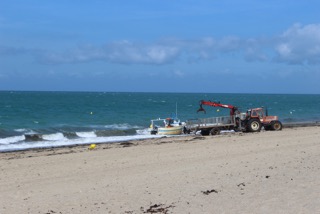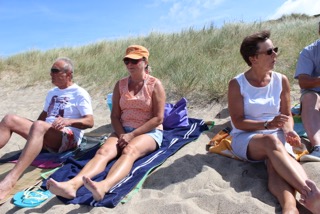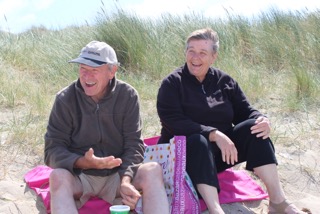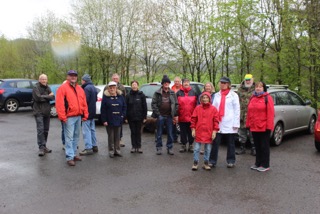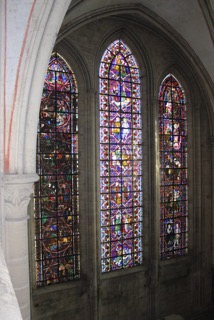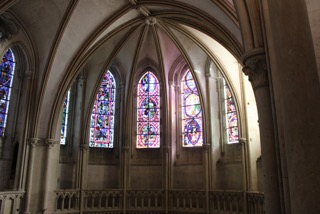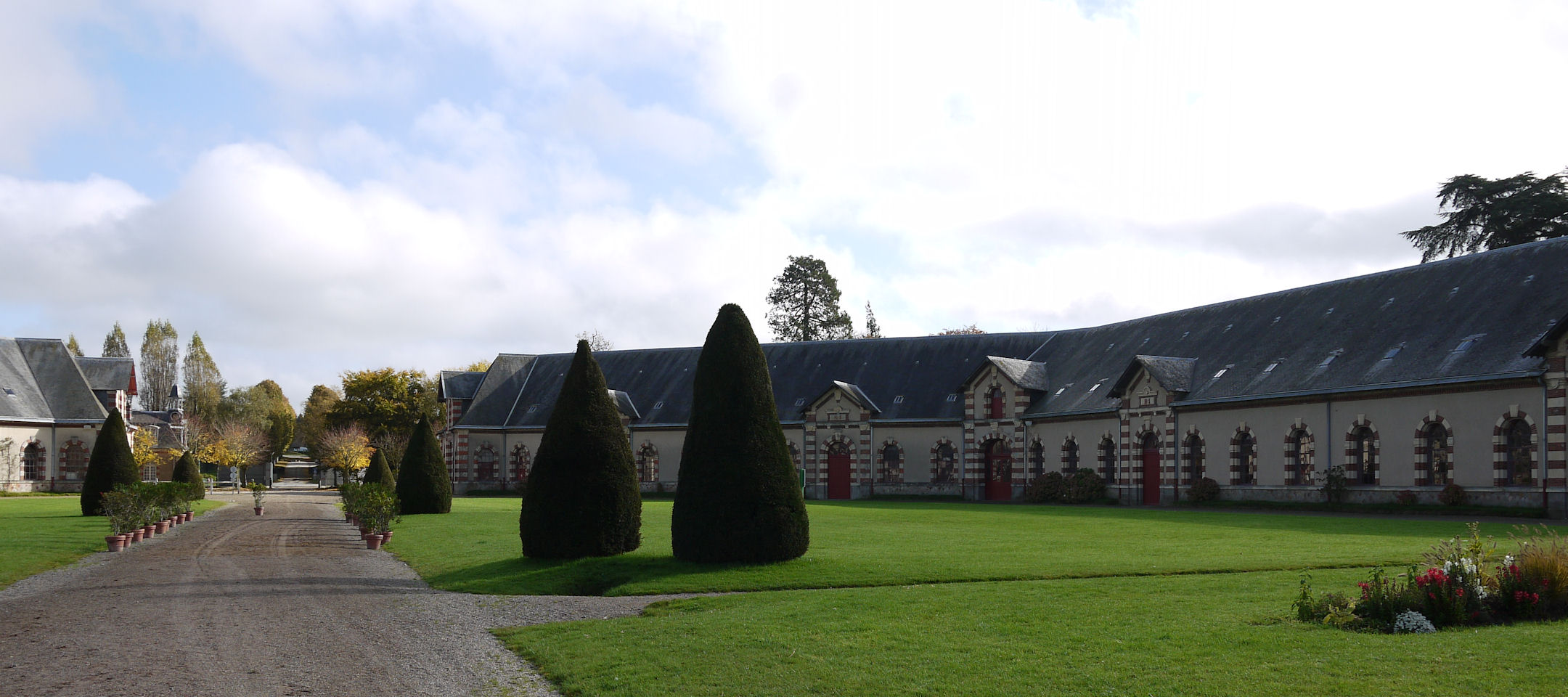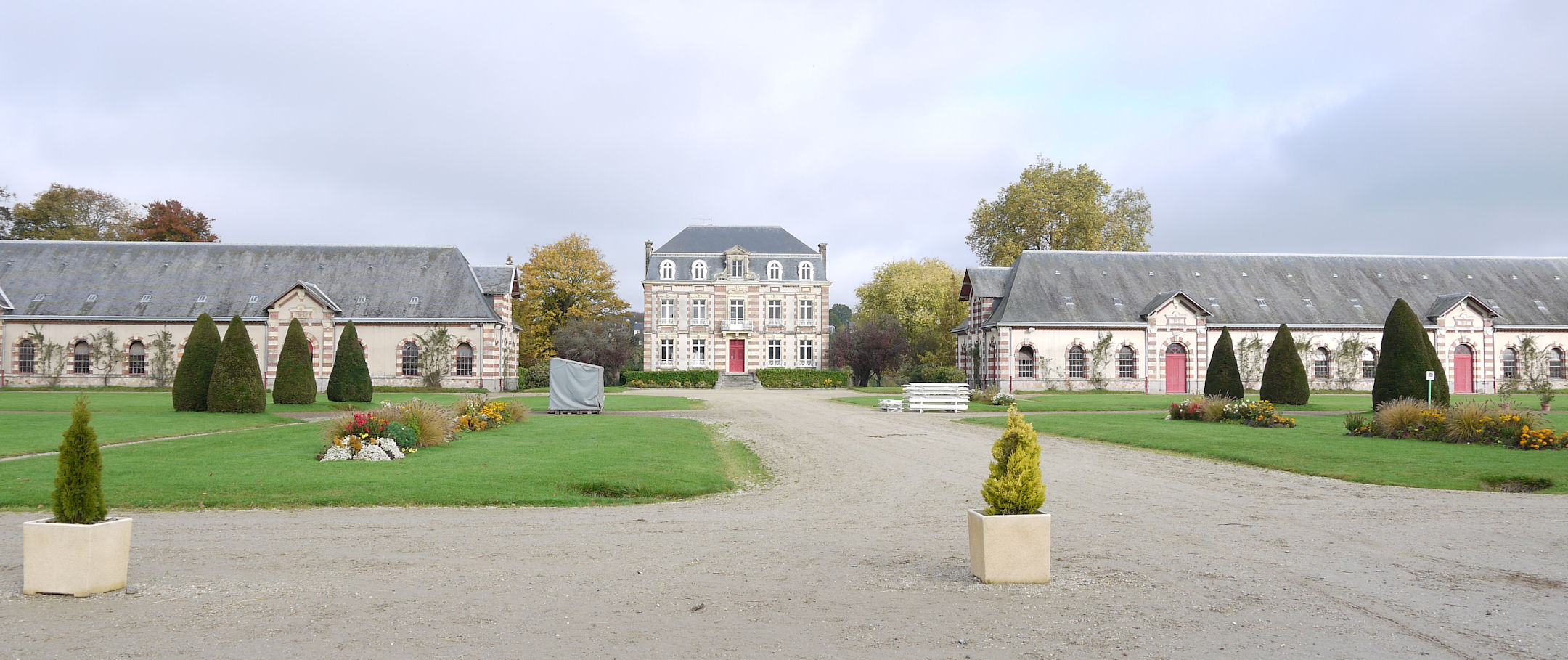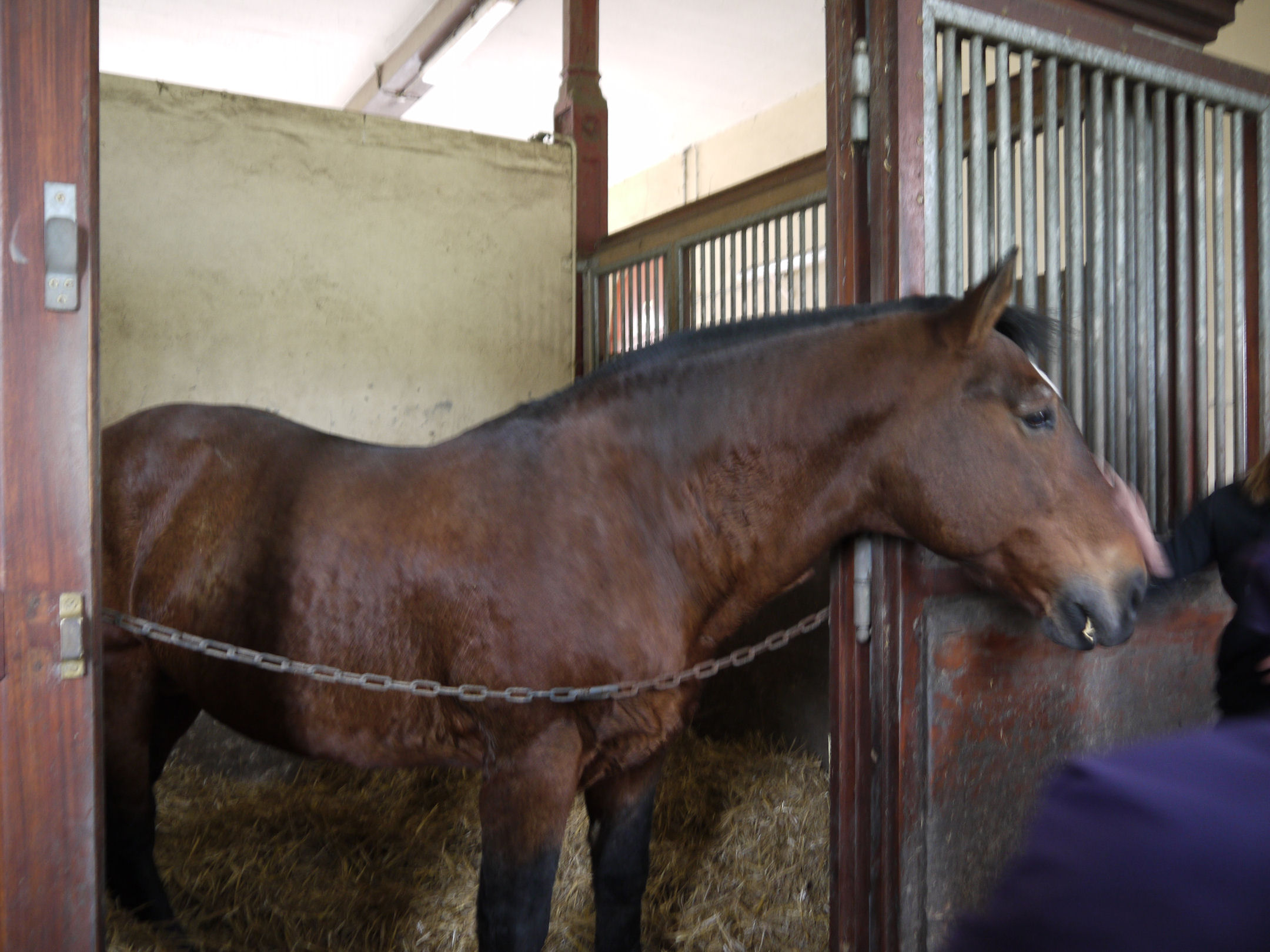On one of the warmest days so far in June, sun-lovers met at Le Borsalino on the marina in Granville. We enjoyed a varied and unhurried lunch including seafood, salads, turkey, gammon and pizzas.
We then made our way to the old portcullis gate at the entrance to the old town of Granville (known as la Haute Ville – high town) to meet our tour guide. It’s a walled fort built on a peninsula. Originally the Portcullis was the only entrance into the fortified town but these days there are three road accesses.
Offering wide open views of the sea on all sides, its strategic importance was noted very early on and the fortified town was built in the 15th century by the English, to control the seas towards le Mont St Michel and surrounding areas. The area near the modern day Casino and beach was carved out so that, at high tide, the sea would come in, meet with the river that flows through the centre of Granville and flow back out to the sea the other side, making the peninsula an island (but only at high tide!). Nowadays, the area has been raised again and no longer floods!
There are two main streets running the length of the peninsula and the cross streets are named after professions (bakers, plasterers, leather workers). People with these professions lived on those streets. If you changed your profession, you had to move out of the street you were living on.
The residents would sell their wares through their front windows. Some of the houses still have these extra wide ledges in place, but the shops and trades have mainly gone now and there are just a few centred around le Place Cambernon, which is the heart of the old town. The residents originally enjoyed a tax free status so it was very popular, with the over spill occupying le rue des Juifs – which still has many small shops and businesses. Much of the old town was built with granite from the Chaussey islands – Coutances and le Mont St Michel also benefited from the granite of Chaussey. The peninsula was occupied (mainly by the allies) during WW2 as it is a very strategic point on the coast offering full control of the sea surrounding it and the bay of le Mont St Michel.
The old town escaped bombings during WW2 and the only damage was sustained by the church when a large and noisy plane flew over and the vibrations caused all the windows in the church to blow out. These were replaced in the 1950’s. When the Eglise Notre Dame du Cap Lihou was originally constructed the design was Roman, but it was not completed at that time. It was later completed in a gothic style and the two very distinct halves are easily seen from the inside.
Near the church is a very unusual house built into and on top of the fortified wall – it is almost like a small fairytale castle.
Much to our surprise, our tour guide informed us that it was actually only built at the turn of the last century. It is privately owned but rumour has it the owner does, very occasionally, open it up to visitors. Our tour guide was delightfully well-informed and able to answer all our questions. Our thanks to Chris and the committee for organising such an interesting day.
Write up and photos courtesy of members.
